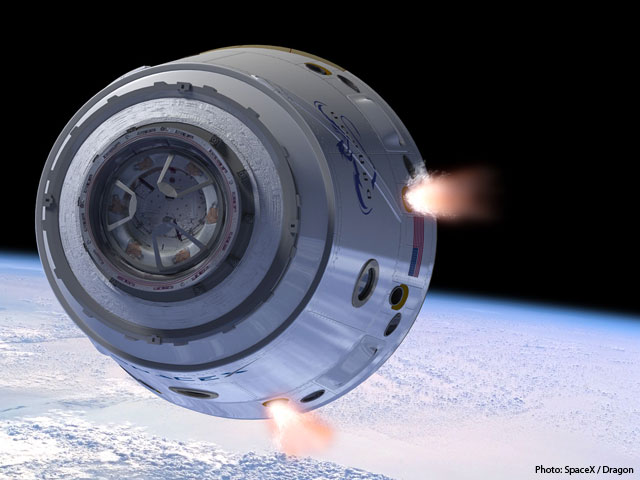NASA Tentatively Approves Plan for Private Spaceship to Visit Space Station

NASA and Space Exploration Technologies Corp. (SpaceX) “technically have agreed” to combine the two remaining flights designed to prove the Hawthorne, Calif., company can deliver cargo to the International Space Station, but formal approval for the mission is still pending, a senior NASA official said.
“We technically have agreed with SpaceX that we want to combine those flights,” William Gerstenmaier, NASA’s associate administrator for space operations, said at a July 21 media briefing at the Kennedy Space Center in Florida. “We are doing all the planning to go ahead and have those missions combined, but we haven’t given them formal approval yet.”
The current plan calls for SpaceX to launch a Dragon capsule aboard a Falcon 9 rocket on Nov. 30. Dragon would then rendezvous and berth with the space station on Dec. 7, NASA spokesman Joshua Buck told Space News July 22. [Photos: The Falcon and Dragons of SpaceX]
Originally, SpaceX would have demonstrated rendezvous and berthing capabilities in separate flights. SpaceX wants to combine the second and third Commercial Orbital Transportation Services (COTS) demonstration flights in order to begin making regular cargo deliveries under the $1.6 billion Commercial Resupply Services contract NASA awarded the company in 2008.
This article was provided by Space News, dedicated to covering all aspects of the space industry.
Get the Space.com Newsletter
Breaking space news, the latest updates on rocket launches, skywatching events and more!
Join our Space Forums to keep talking space on the latest missions, night sky and more! And if you have a news tip, correction or comment, let us know at: community@space.com.

SpaceNews is a comprehensive source of news and analysis of the companies, agencies, technologies and trends shaping the global space industry. They work to deliver timely, accurate and engaging coverage of civil, military and commercial space programs. SpaceNews.com delivers essential coverage to a growing audience of more than 500,000 space professionals and enthusiasts.









